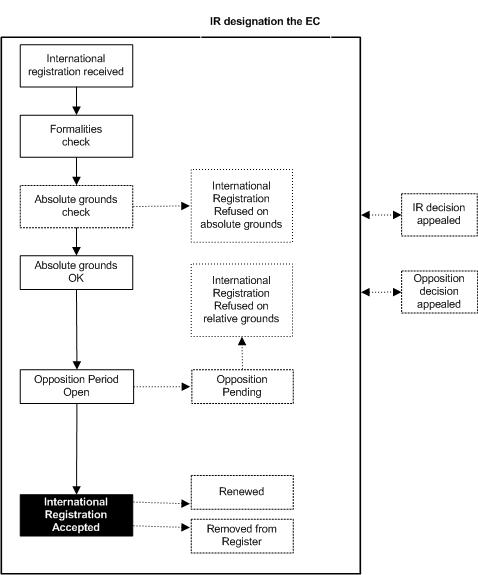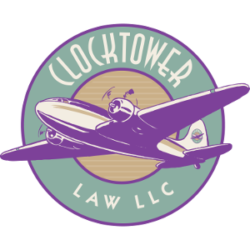The Madrid Protocol is a great option for startups who want foreign trademark protection but don’t want to file trademarks in separate countries.

If you want to have trademarks in the United States and in Europe, then (1) file your trademark application in the US and (2) within 6 months of your US filing file a Madrid Protocol application for International Registration (designating the European Community).
Madrid Protocol: Overview
Under the Madrid Protocol (an international system for the registration of trademarks), a U.S. trademark application or registration can be the basis for an international trademark application, thereby allowing for centralized filing and administration of an international trademark portfolio. Most industrialized nations (with the notable exception of Canada) are members of the Madrid Protocol. The United States became a member of the Madrid Protocol on 11/02/03, and the European Union became a member on 10/01/04. If you file a Madrid Protocol application within six months of your U.S. filing, then your international application will have the same filing date as your U.S. application (pursuant to Article 4 of the Paris Convention). Otherwise (e.g. for already registered marks), your international application will have the filing date of your international filing.
If international registration is important to you and if you want to maintain the benefit of your earlier filing date, then you should consider filing a Madrid Protocol application before the six-month deadline. You can always file international trademarks after the six-month deadline, but you will have lost the advantage of your earlier U.S. filing date by doing so.
Madrid Protocol: Advantages And Disadvantages
The Madrid Protocol’s main advantage is that it eliminates the high filing costs associated with filing separate national applications in each foreign country. The Madrid Protocol’s main disadvantage is that the rights granted by an international registration can be extinguished if its home application does not mature to registration or if its home registration is canceled during its first five years. This concept is commonly referred to as “central attack,” which is extremely rare and whose effects can be avoided by converting Madrid Protocol applications to national applications.
Another disadvantage of the Madrid Protocol is that the description of goods/services in the International Registration is based on the parent application. The United States requires more narrow descriptions of goods/service in trademarks than some other countries. As such, you may be able to secure broader protection by filing directly in those countries. However, if you file trademark applications in any country with broad descriptions of goods/services, you may end up inviting unnecessary conflicts with third parties. (In other words, if your trademark counsel drafts trademark applications like patent applications – starting with broad descriptions then narrowing them during the course of prosecution – then you are doing the equivalent of chest-thumping and are inviting conflict with third parties unnecessarily.) Wise trademark counsel should draft goods/services that are sufficiently broad to protect your trademarks while not causing confusion or conflict with trademarks owned by third parties.
The Madrid Protocol does for international trademark applications what the PCT system does for international patent applications (except that Madrid Protocol applications actually mature into substantive trademark rights, whereas PCT patent applications merely give the applicant the right to file for foreign patent protection). The World Intellectual Property Organization (WIPO) administers the Madrid Protocol.
Madrid Protocol: Costs
International filing fees are generally more expensive than U.S. filing fees. For example, Clock Tower Law Group’s fee is $1500/mark, and filing fees for the European Community are about $2500/mark (depending on currency exchange rates), so it’s safe to budget about $4000/mark for filing trademarks in Europe.
Madrid Protocol: Flow Chart
The following is an overview of filing a Madrid Protocol application designating the European Community:

- International Registration Received
- Formalities Check
- Absolute Grounds Check
- International Registration Refused On Absolute Grounds
- Absolute Grounds OK
- Opposition Period Open
- Opposition Pending
- International Registration Refused On Relative Grounds
- International Registration Accepted
- Renewed
- Removed From Register
- International Registration Decision Appealed
- Opposition Decision Appealed
The Madrid Protocol application process starts with the filing of an Application for International Registration with the USPTO. After the USPTO reviews the application, it will either certify the application and forward it to the International Bureau (IB) of WIPO in Geneva, Switzerland, or it will notify the applicant of any problems.
WIPO then issues an International Registration (IR), which is sort of like an international trademark application filing receipt. The International Registration is then forwarded to the designated international trademark offices, who determine whether the IR holder is entitled to an “extension of protection” (i.e. substantive trademark rights) in their region/country.
In Europe, a First Statement of Grant of Protection (GP1) issues after the trademark has been examined without objection by the examiner. A Second Statement of Grant of Protection (GP2) issues after the trademark has been published without objection by third parties.
The goal, of course, is to get to the “International Registration Accepted” step. In our experience, this occurs, on average, 12-17 months after the initial filing with the USPTO.
In Europe, use of the trademark should be established within five years of registration to prevent having the trademark canceled for non-use.
The term of trademark protection is 10 years from the date of the International Registration (IR), and (as with US applications), the IR can be renewed for subsequent 10-year terms.
Additional countries can be added at any time to the International Registration by filing a Subsequent Designation.
Assignments and renewals are all handled centrally via filings with WIPO, which makes managing your international trademark portfolio much more simple.
Madrid Protocol: Summary
In summary, the Madrid Protocol is a great choice for startups who want to secure protection for their trademarks in multiple foreign countries without the expense of managing multiple international trademark applications.
For more information, see:
- Office for Harmonization in the Internal Market (OHIM) – the European Union agency responsible for registering trademarks and designs in EU countries.
- United States Patent And Trademark Office (USPTO) – information about the Madrid Protocol.
- World Intellectual Property Organization (WIPO) – the international agency that administers the Madrid Protocol.
Related Posts
- Domain Name Law
White hat domainers are not black hat cybersquatters. - Yahoo! Registers First Favicon Trademark
Clock Tower Law Group filed historic favicon.ico trademark. - Trademarks For Company Names And Nicknames
Trademarking company names and nicknames. Just drop the “Inc.” - Trademarks For Logos
Trademarking logos. - Trademarks For Product And Service Names
Trademarking product and service names. - Trademarks For Slogans And Taglines
Trademarking slogans and taglines. - Just Say Moo – How To Name And Brand Your Product To Make It Stand Out From The Crowd
Good branding can separate your cow from the other cattle. - How To Name Your Company, Trademark Your Domain Name, And Domain Name Your Trademark
Think there are no cool domain names left? Think again. I found 201 cool domain names that are taken but six (count ’em, six) that are not. Some of them from a box of crayons. Plus strategies for protecting your trademarks, domain names, and company name.



[EDITOR’S NOTE: In the summer of 2025, Clocktower Intern Mark Magyar used artificial intelligence (AI) software to shorten over 100 Clocktower articles by 17%. The shortened articles are included as comments to the original ones. And 17 is the most random number (https://www.giantpeople.com/4497.html) (https://www.clocktowerlaw.com/5919.html).]
* The Madrid Protocol for Startups
The Madrid Protocol is ideal for startups wanting foreign trademark protection without filing in each country.
If you want trademarks in the U.S. and Europe: (1) file in the U.S., and (2) within 6 months, file a Madrid Protocol application for International Registration (designating the European Community).
Overview
The Madrid Protocol allows a U.S. trademark application or registration to serve as the basis for an international application, enabling centralized filing and portfolio management. Most industrialized nations (except Canada) are members. The U.S. joined in 2003, the EU in 2004. Filing within 6 months of your U.S. application preserves its date under the Paris Convention; later filings lose this advantage.
Advantages & Disadvantages
The main advantage: lower cost versus filing separate national applications. The main disadvantage: “central attack” risk—if your home application fails or is canceled in the first five years, the international rights can be lost. This is rare and avoidable by converting to national applications.
Another disadvantage: the goods/services description is tied to the U.S. parent application, which tends to be narrower than in some countries. Direct filing abroad can secure broader rights but risks conflict with third parties. Wise drafting strikes a balance—broad enough for protection but not so broad as to invite disputes.
Like the PCT system for patents, the Madrid Protocol is administered by WIPO, but unlike PCT applications, it results in substantive rights.
Costs
International filings cost more than U.S. filings. Clock Tower Law Group charges $1,500/mark, and EU filing fees are about $2,500/mark, so budgeting around $4,000/mark is reasonable.
Process
File an International Registration application with the USPTO.
If approved, it is sent to WIPO, which issues the International Registration and forwards it to designated trademark offices.
In Europe, a First Grant of Protection (GP1) follows successful examination, and a Second Grant (GP2) after publication without opposition.
Most applications are accepted within 12–17 months of USPTO filing. In Europe, you must use the trademark within five years to avoid cancellation. Protection lasts 10 years and can be renewed. Additional countries can be added at any time, and assignments/renewals are handled centrally by WIPO.
Summary
The Madrid Protocol is a cost-effective way for startups to secure trademarks in multiple countries without juggling separate national filings.
Resources:
OHIM – EU trademark registration agency.
USPTO – Madrid Protocol information.
WIPO – Madrid Protocol administrator.
Related Posts
Domain Name Law
White hat domainers are not black hat cybersquatters.
Yahoo! Registers First Favicon Trademark
Clock Tower Law Group filed historic favicon.ico trademark.
Trademarks For Company Names And Nicknames
Trademarking company names and nicknames. Just drop the “Inc.”
Trademarks For Logos
Trademarking logos.
Trademarks For Product And Service Names
Trademarking product and service names.
Trademarks For Slogans And Taglines
Trademarking slogans and taglines.
Just Say Moo – How To Name And Brand Your Product To Make It Stand Out From The Crowd
Good branding can separate your cow from the other cattle.
How To Name Your Company, Trademark Your Domain Name, And Domain Name Your Trademark
Think there are no cool domain names left? Think again. I found 201 cool domain names that are taken but six (count ’em, six) that are not. Some of them from a box of crayons. Plus strategies for protecting your trademarks, domain names, and company name.